![<em>What is life?</em> (Schrödinger 1992 [1944]) <em>What is life?</em> (Schrödinger 1992 [1944])](https://www.laspa.slg.br/wp-content/uploads/2021/04/life_capa-647x1024.jpg)
What is life? (Schrödinger 1992 [1944])
SCHRÖDINGER, Erwin. 1993. What is life? The physical aspect of the living cell, with Mind and matter & Autobiographical sketches. Cambridge: Cambridge University Press. [1944]
ANTROPOMETRIA, PODER e PERCEPÇÃO
Now, why are atoms so small? Clearly, the question is an evasion. For it is not really aimed at the size of the atoms. It is concerned with the size of organisms, more particularly with the size of our own corporeal selves. Indeed, the atom is small, when referred to our civic unit of length, say the yard or the metre. […] The king would naturally indicate a length comparable with that of his own body, knowing that anything else would be very inconvenient. […] It thus being settled that our question really aims at the ratio of two lengths – that of our body and that of the atom – with an incontestable priority of independent existence on the side of the atom, the question truly reads: Why must our bodies be so large compared with the atom? […] I can imagine that many a keen student of physics or chemistry may have deplored the fact that every one of our sense organs, forming a more or less substantial part of our body and hence (in view of the magnitude of the said ratio) being itself composed of innumerable atoms, is much too coarse to be affected by the impact of a single atom. We cannot see or feel or hear the single atoms. Our hypotheses with regard to them differ widely from the immediate findings of our gross sense organs and cannot be put to the test of direct inspection. (Schrödinger 1992:7-8)
DOIS PROCESSOS DISTINTOS DE INDIVIDUAÇÃO/ASSOCIAÇÃO:
A small molecule might be called ‘the germ of a solid’. Starting from such a small solid germ, there seem to be two different ways of building up larger and larger associations. One is the comparatively dull way of repeating the same structure in three directions again and again. That is the way followed in a growing crystal. Once the periodicity is established, there is no definite limit to the size of the aggregate. The other way is that of building up a more and more extended aggregate without the dull device of repetition. That is the case of the more and more complicated organic molecule in which every atom, and every group of atoms, plays an individual role, not entirely equivalent to that of many others (as is the case in a periodic structure). We might quite properly call that an aperiodic crystal or solid and express our hypothesis by saying: We believe a gene – or perhaps the whole chromosome fibre – to be an aperiodic solid. (Schrödinger 1992:60-1)
FÍSICA, BIOLOGIA, E A EFICÁCIA CONFIGURACIONAL-ASSOCIATIVA
What I wish to make clear in this last chapter is, in short, that from all we have learnt about the structure of living matter, we must be prepared to find it working in a manner that cannot be reduced to the ordinary laws of physics. And that not on the ground that there is any ‘new force’ or what not, directing the behaviour of the single atoms within a living organism, but because the construction is different from anything we have yet tested in the physical laboratory. To put it crudely, an engineer, familiar with heat engines only, will, after inspecting the construction of an electric motor, be prepared to find it working along principles which he does not yet understand. He finds the copper familiar to him in kettles used here in the form of long, long wires wound in coils; the iron familiar to him in levers and bars and steam cylinders is here filling the interior of those coils of copper wire. He will be convinced that it is the same copper and the same iron, subject to the same laws of Nature, and he is right in that. The difference in construction is enough to prepare him for an entirely different way of functioning. He will not suspect that an electric motor is driven by a ghost because it is set spinning by the turn of a switch, without boiler and steam. (Schrödinger 1992:76)
O PROBLEMA DA ORDEM (fisico-bio-social)
An organism’s astonishing gift of concentrating a ‘stream of order’ on itself and thus escaping the decay into atomic chaos – of ‘drinking orderliness’ from a suitable environment – seems to be connected with the presence of the ‘aperiodic solids’, the chromosome molecules, which doubtless represent the highest degree of well-ordered atomic association we know of – much higher than the ordinary periodic crystal – in virtue of the individual role every atom and every radical is playing here. […] To put it briefly, we witness the event that existing order displays the power of maintaining itself and of producing orderly events. That sounds plausible enough, though in finding it plausible we, no doubt, draw on experience concerning social organization and other events which involve the activity of organisms. And so it might seem that someting like a vicious circle is implied. (Schrödinger 1992:77)
O MOLAR (estatística), O MOLECULAR (mecânica) e A INFOPOLÍTICA (cibernética):
[In biology] A single group of atoms existing only in one copy produces orderly events, marvellously tuned in with each other and with the environment according to most subtle laws. […] Since we know the power this tiny central office has in the isolated cell, do they not resemble stations of local government dispersed through the body, communicating with each other with great ease, thanks to the code that is common to all of them? […] [W]e are here obviously faced with events whose regular and lawful unfolding is guided by a ‘mechanism’ entirely different from the ‘probability mechanism’ of physics. For it is simply a fact of observation that the guiding principle in every cell is embodied in a single atomic association existing only in one copy (or sometimes two [in diploids]) – and a fact of observation that it results in producing events which are a paragon of orderlliness. […] [T]he situation is unprecedented, it is unknown anywhere else except in living matter. (Schrödinger 1992:79)
OS DOIS DIFERENTES MECANISMOS DE PRODUÇÃO DE ORDEM (estatístico e mecânico/dinâmico):
It appears that there are two different ‘mechanisms’ by which orderly events can be produced: the ‘statistical mechanism’ which produces ‘order from disorder’ and the new one, producing ‘order from order’. […] In short, all purely mechanical events seem to follow distinctly and directly the ‘order-from-order’ principle. (Schrödinger 1992:80-1)
ORDEM COMO EFEITO TERMODINÂMICO (Teorema de Nernst e mecânica quântica):
When does a physical system – any kind of association of atoms – display ‘dynamical law’ (in Plank’s meaning) or ‘clock-work features’? Quantum theory has a very short answer to this question, viz. at the absolute zero of temperature. As zero temperature is approached the molecular disorder ceases to have any bearing on physical events. […] Quantum theory provides the rational foundation of Nernst’s empirical law, and also enables us to estimate how closely a system must approach to the absolute zero in order to display an approximately ‘dynamical’ behaviour. What temperature is in any particular case already practically equivalent to zero? […] Now you must not believe that this always has to be a very low temperature.(Schrödinger 1992:84)
MECANISMOS FÍSICOS e MAQUINISMOS BIOLÓGICOS:
But please do not accuse me of calling the chromosome fibres just the ‘cogs of the organic machine’ – at least not without a reference to the profound physical theories on which the simile is based. […] For, indeed, it needs still less rhetoric to recall the fundamental difference between the two and to justify the epithets novel and unprecedented in the biological case. […] The most striking features are: first, the curious distribution of the cogs in a many-celled organism, for which I may refer to the somewhat poetical description on p.79; and secondly, the fact that the single cog is not of coarse human make, but is the finest masterpiece ever achieved along the lines of the Lord’s quantum mechanics. (Schrödinger 1992:85)
O PARADOXO DA INTENCIONALIDADE (as duas premissas):
(i) My body functions as a pure mechanism according to the Laws of Nature. […] (ii) Yet I know, by incontrovertible direct experience, that I am directing its motions, of which I forsee the effects, that may be fateful and all-important, in which case I feel and take full responsibility for them. (Schrödinger 1992:86-7)
CORPO e TÉCNICA, FORMA, FUNÇÃO, ÉLAN e HÁBITO (neo-lamarckismo):
Behaviour and physique merge into one. You simply cannot possess clever hands without using them for obtaining your aims, they would be in your way […]. You cannot have efficient wings without attempting to fly. You cannot have a modulated organ of speech without trying to imitate the noises you hear around you. To distinguish between the possession of an organ and the urge to use it and to increase its skill by practice, to reqard them as two different characteristics of the organism in question, would be an artificial distinction, made possible by an abstract language but having no counterpart in nature. We must, of course, not think that ‘behaviour’ after all gradually intrudes into the chromosome structure (or what not) and acquires ‘loci’ there. It is the new organs themselves (and they do become genetically fixed) that carry along with them the habit and the way of using them. Selection would be powerless in ‘producing’ a new organs if selection were not aided all along by the organism’s making appropriate use of it. And this is very essential. For thus, the two things go quite parallel and are ultimately, or indeed at every stage, fixed genetically as one thing: a used organ – as if Lamarck were right (Schrödinger 1992:113)
HUMANOS e MÁQUINAS:
Instead of letting the ingenious machinery we have invented produce an increasing amount of superfluous luxury, we must plan to develop it so that it takes off human beings all the unintelligent, mechanical, ‘machine-like’ handling. The machine must take over the toil for which man is too good, not man the work for which the machine is too expensive, as comes to pass quite often. (Schrödinger 1992:116)
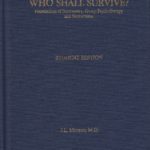
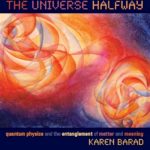
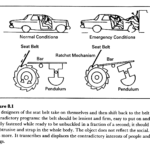
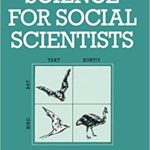
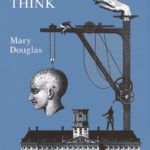
 LaSPA is located at the Institute of Philosophy and Human Sciences (
LaSPA is located at the Institute of Philosophy and Human Sciences (